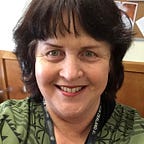Partnership with Hawaiians central to new waka centre
Hawaiian navigator and voyaging leader Nainoa Thompson of the Polynesian Voyaging Society is a vital influence for the Kupe Waka Centre at Aurere in Northland.
None of this could have happened without that first visit of the waka hourua, Hōkūleʻa in 1985, and the impact this had on the late Sir Hekenukimai Ngaiwi Puhipi Busby, says Centre development manager, Peter Phillips.
In 1983, in preparation for the Voyage of Rediscovery, a young Nainoa was anxious to learn the stars of the southern hemisphere.
Guided by John Rangihau, Nainoa made his way to Aurere where he met then bridge-builder, Hek Busby. The two spent the next year together keenly observing the night sky as Sir Hek recounted stories of the tūpuna.
That relationship would change history. With firm resolve, Hector told Nainoa;
“In this land, we still have our canoe buried. In this land, we still have our language and we trace our genealogies back to the canoes our ancestors arrived on. But we have lost our pride and the dignity of our traditions. If you are going to bring Hōkūleʻa here, that will help bring it back. Whatever you need to do, I am with you all the way.”
On December 7, 1985, Hōkūleʻa was greeted by Ngātokimatawhaorua and several hundred members of the Te Tai Tokerau community upon arriving at Waitangi.
Inspired by this historic landfall which affirmed Polynesian ingenuity and effectively quieted the naysayers, Sir James Henare declared that the Hawaiians arriving by traditional waka hourua represented “the sixth tribe of Te Tai Tokerau”.
Sir James then challenged Māori to follow suit with their own waka.
This became a personal calling for Sir Hek, one which he pursued vigorously and fulfilled in grand form with the completion of the iconic Te Aurere, and its Pacific-wide voyages of over 30,000 nautical miles encompassing Hawaiʻi, Nukuhiva, Tahiti, New Caledonia, Rarotonga and Rapa Nui.
His waka legacy grew to include Ngāhiraka Mai Tawhiti and more than 30 other waka, and created a movement propelled by a host of contemporary waka hourua that promote traditional voyaging among today’s generation.
Soon after the 1985 landfall, Sir James, Sir Graham Latimer and other revered kaumātua affirmed a process initiated by Sir Hek for the naming of the Hawaiian tribe, “Ngāti Ruawāhia” which means “tribe of the star Arcturus” which is Hōkūleʻa in Hawaiian.
Then in 1992, a sacred carved Hawaiian poupou named “Māuipāmamao” was erected at Te Tii Marae, Waitangi to represent the “sixth tribe.”
Ngāti Ruawāhia is an extended family heritage that has been stewarded by two entities since the 1985 landfall; the Polynesian Voyaging Society which created and sails the Hōkūleʻa, and Kamehameha Schools which has coordinated logistics, provided resources, and continues to serve as cultural and educational advisor for the Polynesian Voyaging Society.
Nainoa Thompson, President of the Polynesian Voyaging Society, and Dr Randie Kamuela Fong, Executive Culture Officer of Kamehameha Schools, worked with partners Bishop Museum and the University of Hawai’i to form the ʻAha Moananuiākea Pacific Consortium in 2018.
Sir Hek’s close relationships with both Nainoa and Randie going back some 35 years made his role as guiding elder for the Consortium especially meaningful, and he continues in that role today in spirit.
Throughout 2018, months before PGF funding was granted, some 25 Kamehameha Schools representatives of Ngāti Ruawāhia came to Aurere on three occasions to clean the interior and exterior of the unfinished whare wānanga.
Private donations from Hawaiʻi provided invaluable construction support in preparation for a dedication ceremony that Ngāti Ruawāhia was invited to conduct — Sir Hek named the house Whetū Mārama.
Together with Tārai Waka and Arawai Ltd, Sir Hek signed a Declaration of Kinship with the Consortium which forms the basis for support of cultural-educational collaborations, the refurbishing of Te Aurere, and plans for modest accommodations on land at Aurere which Sir Hek envisioned for Ngāti Ruawāhia members visiting the Kupe Waka Centre.
This partnership positions the Kaʻiwakīloumoku Hawaiian Cultural Center at Kamehameha Schools — where Sir Hek was honoured in special ceremonies — as a “sister centre” to the Kupe Waka Centre.
